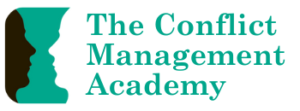If you read my previous newsletter about trauma informed practice in conflict resolution, you will recall that one of the core trauma-informed principles is client choice. Choice is important for clients who have experienced trauma, but providing choice is also good practice for all clients. Choice supports empowerment and self-determination, which is important for conflict management, resolution and transformation (and for personal wellbeing).
“Choice enables people to be actively and expressively engaged in the world”. Barry Schwartz
People in conflict have a range of choices, including whether to engage; how and when to engage; and whether to accept a certain outcome. Sometimes these things have been imposed on them by someone with authority (a manager, referral by a court, etc.) but to a certain extent, the individuals involved still have choices about how to engage within what is mandatory.
Question for reflection: Even when there is apparent choice available, is there explicit or subtle pressure to engage (or to engage in a certain way)? Are there systematic “nudges” towards a particular choice?
Process choices
In a broad sense, people in conflict have choice about which kind of process they choose to use to help them manage or resolve it. They might choose a DIY approach, coaching, mediation, arbitration or litigation. They may be able to access a pre-existing or bespoke hybrid process. There is a growing awareness about the usefulness of bespoke hybrid approaches to conflict resolution. For example the International Mediation Institute’s Mixed Mode Task Force examined ways to combine different dispute resolution processes from various cultural and legal standpoints. Two of the task force members explained:
By focusing on issues of process first, the parties can consider less tangible issues early on, such as personalities, cultures, loyalties and emotional reactions as well as concrete calculations such as fees, deadlines, the relief sought, and how to best implement a final outcome. No assumptions are made and there is less gamesmanship. The parties have greater scope to think about their procedural needs having been freed of their immediate focus on possible substantive outcomes and such concepts as “winning” or “losing.” Laura Kaster and Jeremy Lack
While there is no doubt that hybrid processes are useful, these processes often work on the big picture level (e.g. combining already defined processes such as arbitration, conciliation or mediation) rather than at the micro level.
It’s also important for each of us to consider how we can support our clients to adapt and design bespoke processes within (or even outside of) each of those broad categories. We may be able to create a lot more flexibility and creativity than we realise!
The phenomenon of transformative dialogue is a good example of this. As Dan Simon explains in his mediate.com article on the topic:
In transformative dialogue, the facilitator(s) do not determine who should participate, what the goals, if any, of the conversation(s) should be, what the agendas, if any, of the meeting(s) should be, or what ground rules, if any, should be set.
Rather, the facilitator works with the parties to design a process that best meets their needs. For more information about transformative dialogue, you can also see the article by Erik Cleven and Judy Saul referenced below.
The transformative mediation approach works in a very similar way. There are no pre-conceived stages to the process, no typical ground rules or agenda setting protocols. The mediator supports the parties to have a conversation in whatever way works for them, revising and adapting to their needs along the way.
We may not all be entirely comfortable with such a free range approach in the support that we provide, however it is still worth considering where we do offer parties choices within our processes, and where we may be able to open up additional choices for them.
Choosing how and when to engage in conflict can mean a lot more than just choosing a “model” and a “practitioner”.
How much choice do you offer your clients in relation to:
- Who is their practitioner?
- Whether they want ground rules (and if so, to choose what they are)?
- Whether they meet in person or online.
- If meeting online, whether they have their video camera on or off?
- If you meet in person, the location of those meetings?
- Whether parties can have support people present?
- Whether people communicate verbally or in writing.
- Whether there is formal turn-taking or not.
- How long their sessions with you are (private or joint).
- How many sessions they have.
- When the sessions end (or are paused).
- What is discussed.
- Whether there is an agenda or a less formally ordered conversation.
- What information is shared with whom and under what conditions.
- What a successful outcome looks like.
- How a decision might be made, and with whom.
- Whether an agreement is binding / in writing / shared with anyone.
If you do offer clients choices, it’s important that those choice points are clear and your clients have appropriate space and time to make them.
I’ll leave you with this question for reflection:
How much choice do you choose to offer your clients?
Additional reading:
The art of choosing by Sheena Iyengar.
The paradox of choice by Barry Schwartz.
Orienting toward party choice by Robert Baruch Bush and Dan Berstein.
A nudge to mediate: how adjustments in choice architecture can lead to better dispute resolution decisions by Daniel Watkins
Helen Shurven and Clair Berman-Robinson ‘Design in Dispute Resolution Practice: Tips and Tools’ and ‘ADR process design: Considerations for ADR practitioners and party advisors’ (2016) 27 ADRJ 133.
Erik Cleven and Judith A. Saul (2021) Realizing the promise of dialogue: Transformative dialogue in divided communities. Conflict Resolution Quarterly 38(3):111-125.

